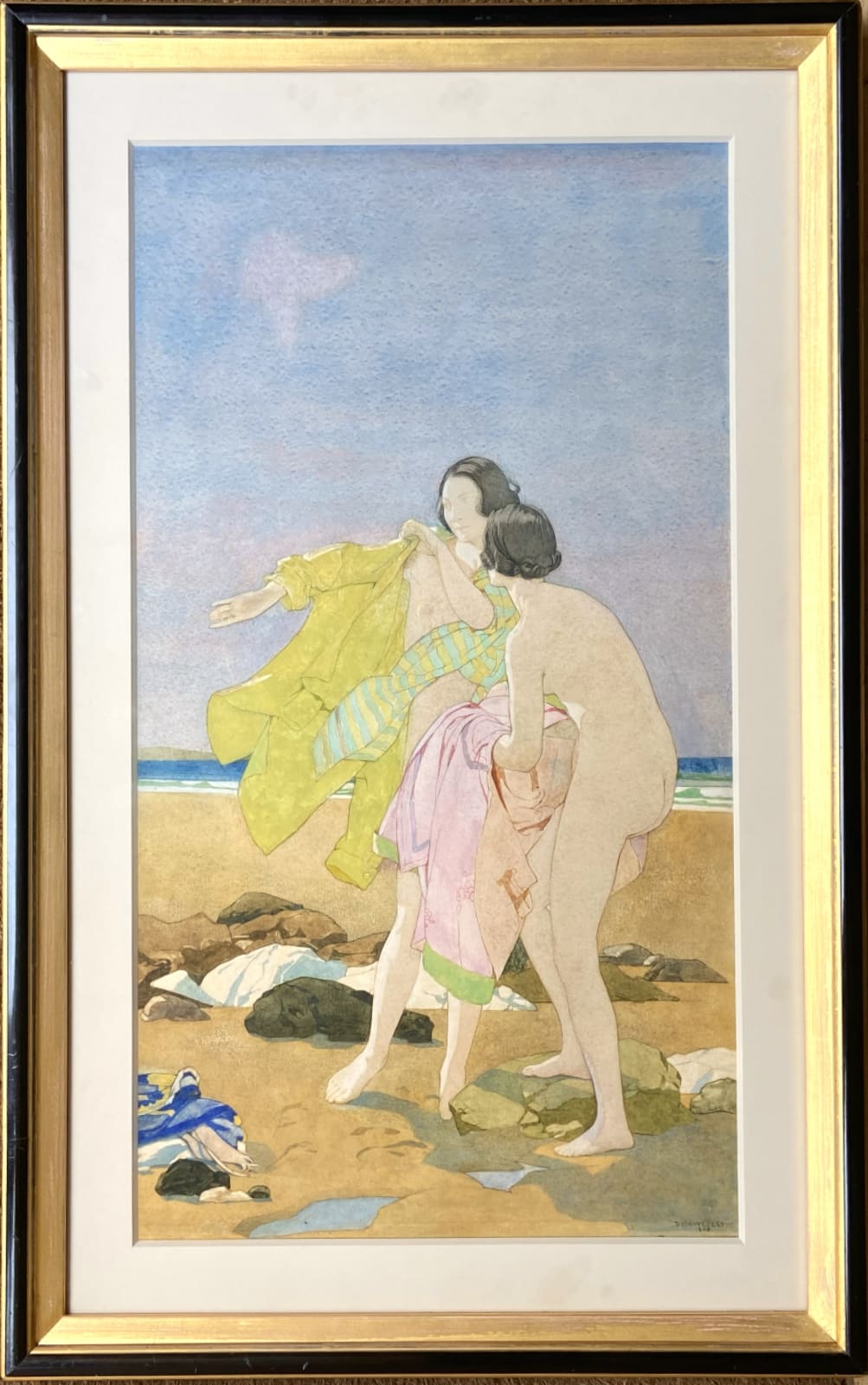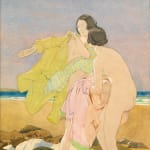Dorothy Webster Hawksley (1884-1970)
Provenance
St John Hornby;
Dean Thompson Collection, Overland Park, Kansas
Exhibitions
Royal Academy, 1923, no 709
Literature
The West in an Eastern Manner: At the Academy, The Sketch, 9 May 1923, illus. p. 18;
Different version illustrated in The Studio, 1922, volume 84, ill p 258;
John Littlejohns, British Water-Colour Paintings and Painters of Today (1931), Plate XIV (illustrated as 'The Bathers')
In the 1920s, Hawksley evolved a flat schematic style that was distinctively personal, though strongly influenced by Japanese prints, with lesser debts owed to the early Italian masters (she often referred to ‘Mike’, or Michelangelo) for composition and to Cayley Robinson for tone – but the rhythmic colour was all her own. Her subjects were usually women and motherhood, although she was childless. Here, at the end of the day, bathers hurry to dress against the chill breeze, casting long shadows across the beach.
John Littlejohns, in British Water-Colour Paintings and Painters of Today (1931), noted that a picture by Hawksley ‘always ... attracts immediate attention by its pure colour, decorative conception, fine draughtsmanship, and technical excellence’; he went on to quote a letter by the artist in which she sets out her technique, referring specifically to this picture: ‘My method is to mix a little tempera paint with the transparent water-colours when putting on a wash, to help it to adhere to the paper when a second wash is painted over it. As an illustration I will describe the process I used for “The Bathers” [sic], which was done on “hot- pressed” Whatman board. I drew my group of figures, then mixed a quantity of blue wash, adding a little tempera blue. I tilted my drawing slightly and washed on clean water, and while this was still wet I washed on the blue in horizontal strokes, beginning at the top of the paper and let it run down. While it was drying I took a clean brush and wiped out the figures (the outline was visible), and any other part which was to be lighter than the blue. When it was quite dry I laid on another wash in the same way — as far as I can remember, pink — and again wiped out the figures, and so on, gradually building up the tone and colour. A landscape I should do in the same way, washing the sky over the whole surface and wiping out anything that is lighter than the sky, and of course any part intended to be painted in a colour which did not contain blue’.
The Maas Gallery, 6 Duke Street, St. James's, London, SW1Y 6BN
+44 (0) 20 7930 9511 | mail@maasgallery.com
This website uses cookies
This site uses cookies to help make it more useful to you. Please contact us to find out more about our Cookie Policy.








